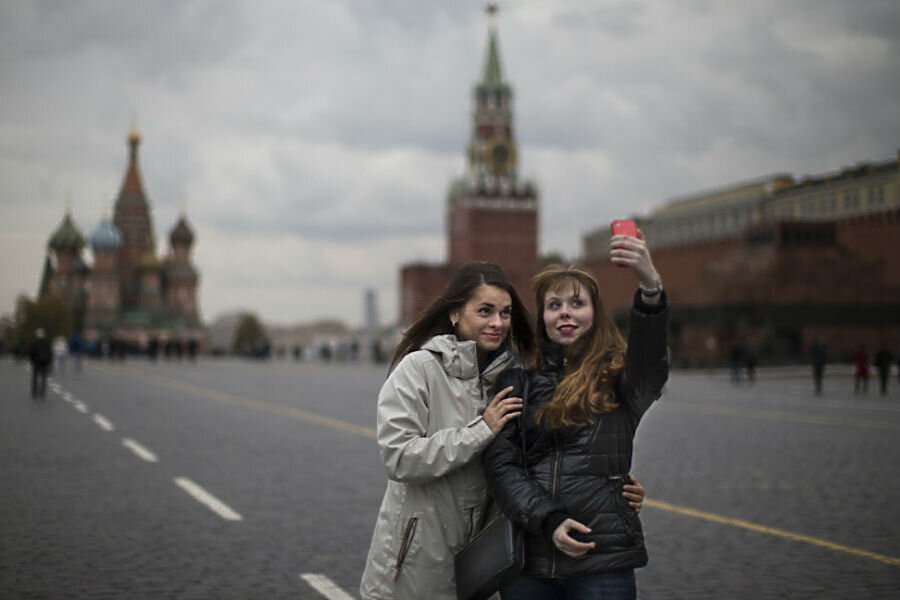How to prevent death-by-selfie: a guide from Russian government
Loading...
In present-day Russia, selfies take you.
Following a string of selfie-related deaths and injuries, the Russian Interior Ministry has launched a campaign for "safe selfies." Their motto? "Even a million 'likes' on social media are not worth your life and well-being."
An online guide includes a chart of graphics depicting stick figure selfie-takers in a variety of potentially dangerous situations that include posing near lions, train tracks, and atop electrical towers.
Many of these examples are based off of real-life accidents. Last April, inspired by a trend of Russian youths climbing tall structures to take selfies at the top, a Saint Petersburg teenager died when she fell on railroad tracks. Another young woman fell to her death taking a selfie on a bridge this past weekend, and a Moscow woman accidentally shot herself in the head while posing with a gun in May.
"Each of these cases could have been prevented," their online statement reads. "When a person is trying to take a picture of themselves, they become distracted, lose their balance, they don't look around and don't feel in danger."
Russians aren't the only ones putting their lives at risk for the sake of Instagram likes. Earlier this year, a civilian plane crashed in Colorado, killing the pilot and his passenger, when the pilot lost control of the plane while taking selfies. Another man was electrocuted to death in Spain when he attempted to climb atop a parked train to take a photo with friends.
In 2014, a viral video of a man getting kicked in the head by the conductor of a moving train while shooting a video of himself attracted over 37 million views on YouTube. He was unhurt, but three college students from India attempting a similar stunt weren't so lucky.
The list of accidents under thrill-seeking circumstances goes on and on – and that's not even counting the accidents caused by people snapping photos of themselves while driving. A search for the #drivingselfie hashtag on Instagram produces thousands of results, and at any given daylight moment, approximately 660,000 Americans are using cell phones or other electronic devices while behind the wheel, accounting for the 1 in 4 car accidents caused by cell phone use.
The dangers of being distracted by your cell phone even extend to walking, researchers say. An analysis of hospital data conducted at Ohio State University found that injuries involving cell phone use while walking more than doubled between 2005 and 2010. This dangerous trend has forced some institutions to take preventative measures, like the Utah college that created a separate stairway lane for texters.
"Today technical advances do not stand still, but with all the advantages there are new challenges and threats," Russian ministry official Yelena Alekseyeva told reporters during the campaign's launch on Tuesday. "Our booklet reminds you of how to take a safe selfie, so it is not the last one you will ever take."
So what tips is the Russian government giving selfie-takers to keep them out of harm's way?
"When taking a selfie, be sure that you are in a safe place and your life is not in danger!"








